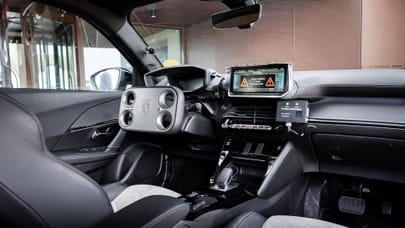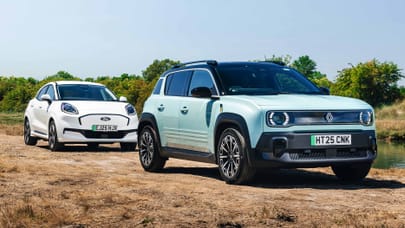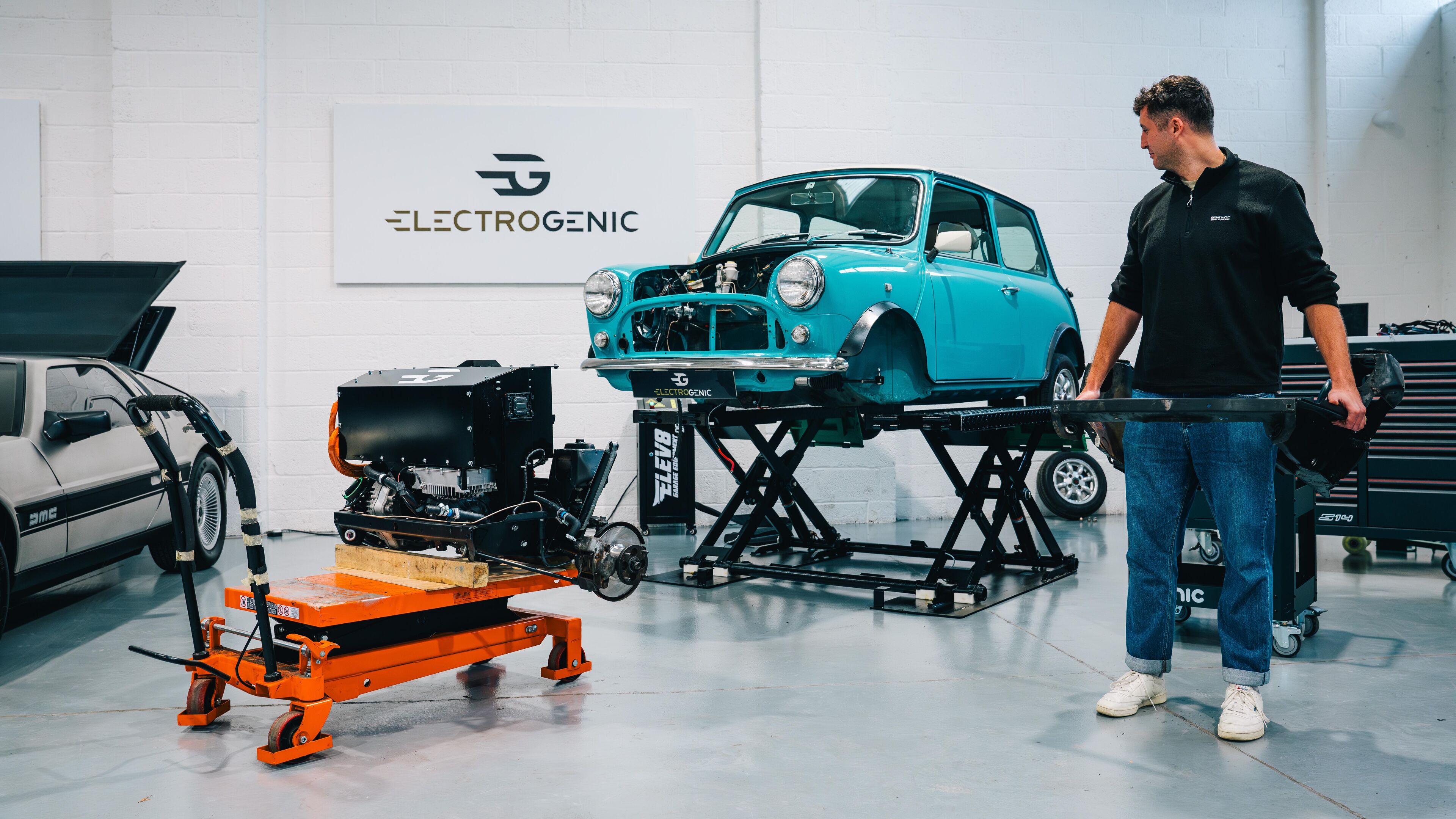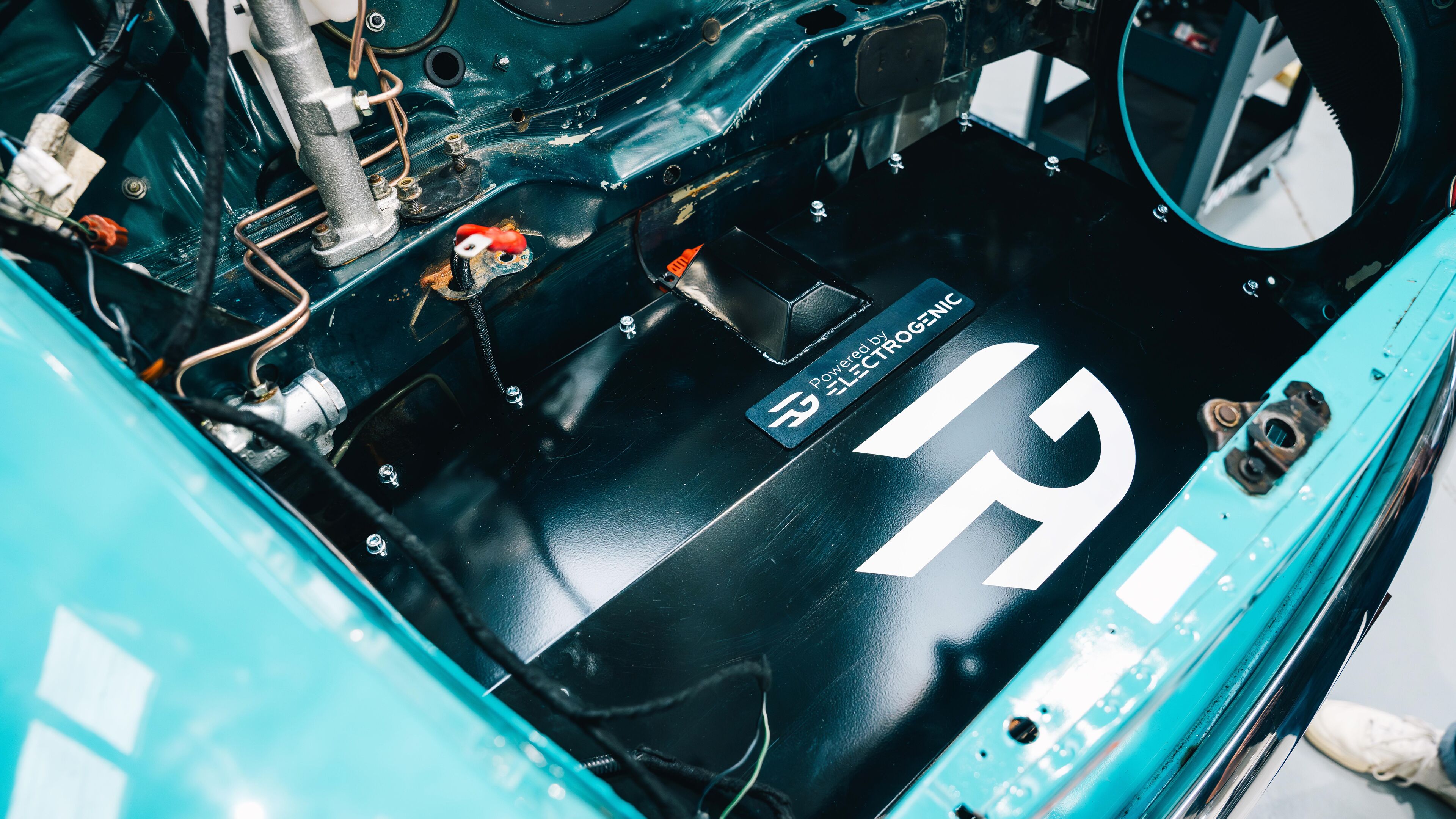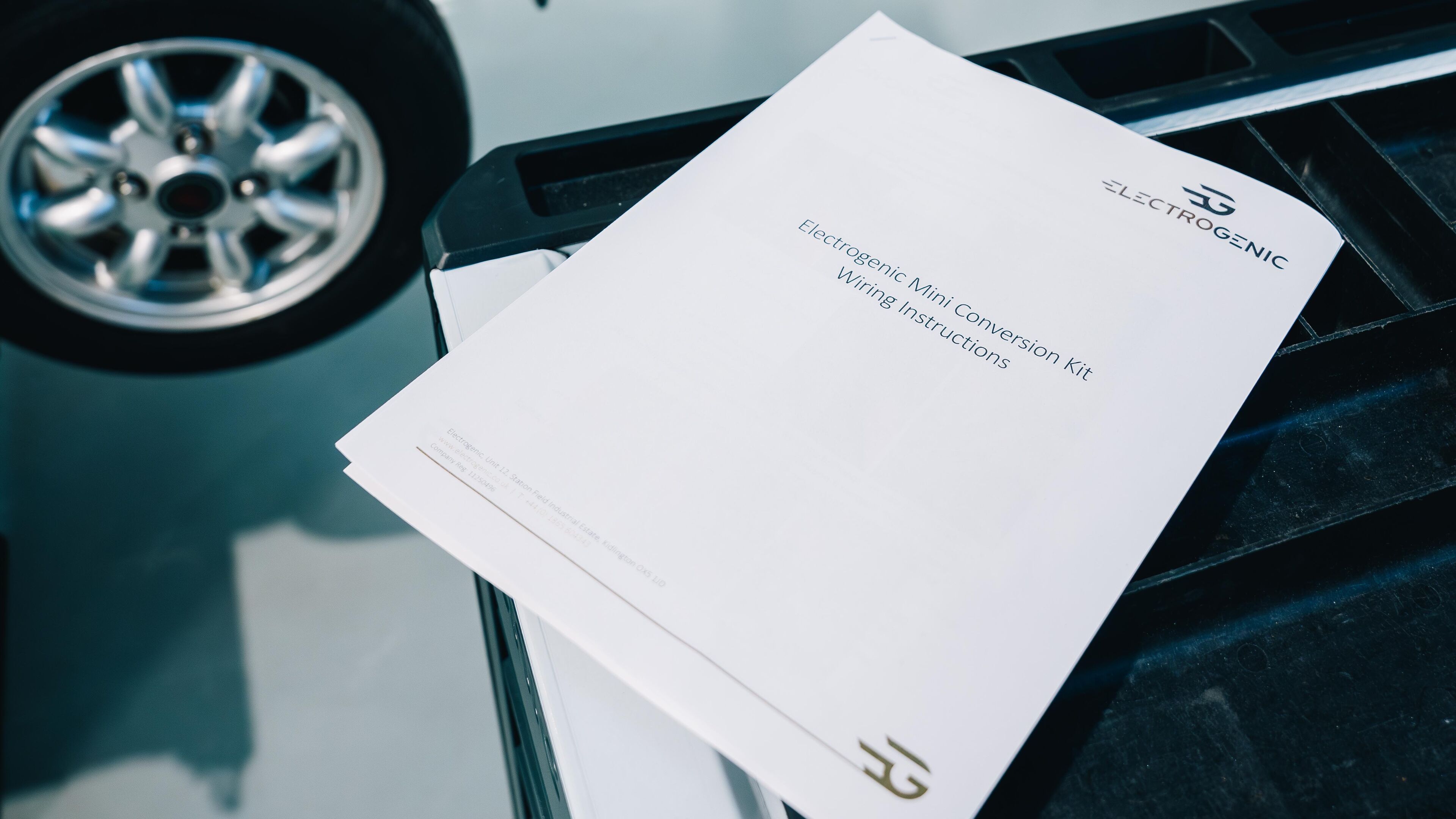
Electromechanic: can you convert an original Mini to an EV in one day?
Meet the electric restomod that you can build at home - it’s so easy you can do the conversion in a day...
Electrogenic's ‘drop-in’ kit allows you to convert your old Mini into an EV from the comfort of your garage. Apparently it's so straightforward, even a novice could fit it...
“It’s super simple,” read the missive from editor Rix. “Aim is to fit the entire EV kit to a Mini in a day. Prove how easy it is.” Erm, right. I will freely admit that, while I can talk and write about cars until the brake horsepowers come home, I’m not exactly the handiest with a spanner.
The kit itself is Electrogenic’s latest offering. The Oxfordshire-based firm has been converting classics since 2018 and will still build your car for you if you ask nicely, but having racked up a two year waiting list it recently decided to progress its self-install scheme. You won’t be recreating Jason Momoa’s electric 1929 Rolls-Royce Phantom II in your living room any time soon (Electrogenic reckons that build was “the most ambitious and complex EV conversion ever undertaken”) but the Mini kit doesn’t require any high voltage work and so can be done by those with a small amount of mechanical experience, a ramp and a decent toolkit.
Photography: Huckleberry Mountain
That convenience is what we’re here to test, and why the Electrogenic Mini was our Retro Hero of the Year 2024. Oh, and because the converted Cooper van wiped the floor with the Moke and the Microlino.
Anyway, best get started if we’re to drive this thing out of the workshop later today. Thankfully Electrogenic hasn’t just stuck me in a corner of the workshop (an ex-TWR facility in Kidlington) and left me to it. I’ve got the help of engineer Louis Hayes-Hamilton for the entirety of his working day to turn this Japanese-spec 1996 Rover Mini into a proper electric restomod.
Handily, before I arrived Electrogenic spent two days prepping the car, which included removing the dinky A-series engine, but the conversion kit is ready and waiting just as it’d look for a customer. Amazingly, the whole setup fits under the bonnet of the original Mini and comes premounted on a new front subframe that Electrogenic builds in-house.
The package includes a 3.3kW onboard AC charger and a 60bhp electric motor with a 20kWh battery stuck on top that should provide around 80 miles of range. An extra 20kWh unit housed in the boot will be an option, but that may need to be fitted by one of Electrogenic’s ‘installation partners’.
Top Gear
Newsletter
Thank you for subscribing to our newsletter. Look out for your regular round-up of news, reviews and offers in your inbox.
Get all the latest news, reviews and exclusives, direct to your inbox.
As it turns out, only six bolts connect the Mini’s front subframe to the body, so once we’ve popped the teeny 12in wheels off, removed the ball joints and disconnected the dampers, we’re able to drop the original subframe out by hand.
To speed things up at this point, Louis drafts in some proper help from elsewhere in the Electrogenic team. This particular Mini is destined for life as a demo car (brave letting Top Gear anywhere near it), so the opportunity is taken to change the brake discs, pads, master cylinder, brake lines, dampers and a load of bushes while the suspension is moved onto the new subframe. If you’re taking on the conversion to electric power at home, you’d probably use this opportunity to do the same, even if your 60bhp motor merely reflects the power of the original.
Next up we need to drop the car down onto its fresh subframe and introduce the 28-year-old Mini to its new heart. It’s a supremely tight fit to clear the brake lines, the rubber boots on the driveshafts and the bonnet release as the car drops down, but once we’ve clarified the actual direction of “backwards” and “forwards” Louis gets it all lined up and into place... with the help of a crowbar and a couple of blocks of wood. Who knew that a Mini wouldn’t have much space up front? Time for lunch.
After yet another coffee I’m tasked with torquing up the bolts connecting our new subframe to the body. Only one of six ends up rounded – not bad going in my book. The whole system is water cooled, so next up the new radiator (sourced from a motorbike) goes in. It lives in the same spot as it would when paired with an internal combustion engine, but the fan is supremely tricky to get tied down.
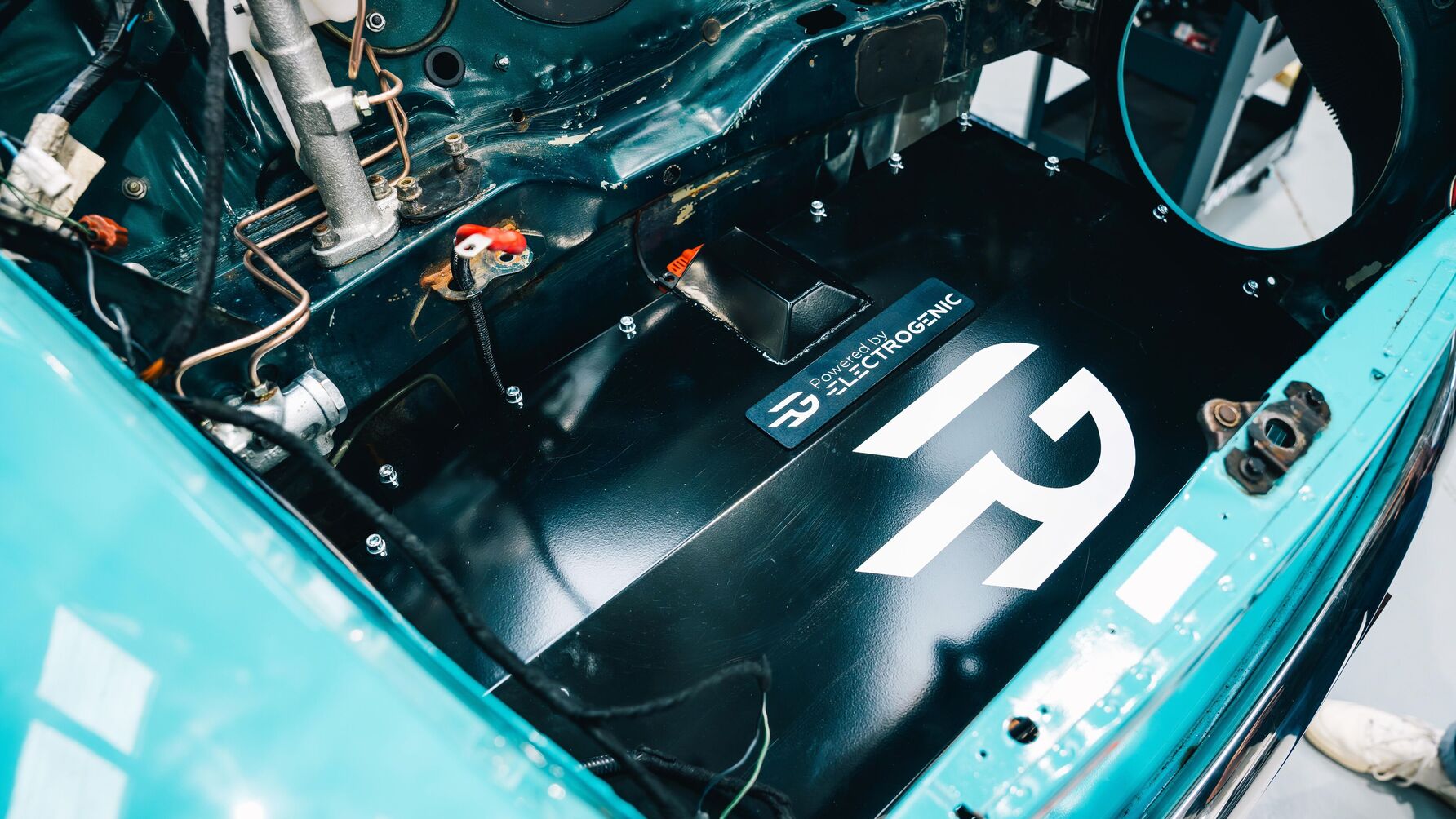
I decide against deploying Jeremy’s timesaving Caterham building tactic of missing out washers, although that wouldn’t have flown with Louis leading the build – I accidentally miss one and he’s spotted it in seconds. The high voltage fuse box is then mounted and we manage to get all of the necessary brackets in place. I say we, but without Louis there would inevitably still be a gaping hole up front.
With the clock ticking down and the team wanting to leave this side of midnight, Ben Davies is brought in to look after the low voltage wiring while Louis bleeds the brakes. Usually you’d need to follow a wiring diagram and splice a few wires yourself during one of these builds, but Ben has already whacked on a load of connectors to make our day that bit easier. In fact, it’s pretty much plug and play at this point. The Electrogenic kit uses all of the existing grommets and there’s no need to cut into the dash at all – the company prides itself on its conversions being reversible in case you change your mind and want to switch back to petrol power.
No turning back now, though. A potentiometer throttle pedal is added (it’s actually the same one as Electrogenic uses on its Land Rover Defender conversions but with a new mount) so that lifting off can activate the regenerative braking and the lovely(ish) wooden dashboard goes back in with just three screws. Simple. Electrogenic taps into all of the original switches and gauges so that everything should work as normal if you follow the instructions, and the original wiring loom will still be in place so that even the fiddliest bits can be returned to standard.
In this car we fit a 3D printed drive selector, but that could apparently be replaced by a simple switch on the dash if the customer requested. Turns out a return to its factory spec might be a bit trickier than usual on this car though, because a peek under the carpet shows that it was once painted British Racing Green rather than its current turquoise shade.
After a few laps of the block, I wish we were keeping it
As the wheels hit terra firma for the first time since the transplant, the Mini whirrs into life. Customers will get a diagnostics app to check that everything is behaving as it should at this point, but we’re able to use Electrogenic’s own reader to confirm that I haven’t managed to mess anything up too badly. All of the Mini kits will have their powertrains fully bench tested before being shipped, so there shouldn’t be any surprises. Battery, motor and inverter temperatures are all satisfactory, and having jacked up the front end we can confirm that the kit is sending its power to the wheels. It lives.
As the night fog rolls in, the roller shutter rises and I drive TG’s very own electromod into the dark. After a few laps of the block, I wish we were keeping it. Electric power suits the car perfectly with 100lb ft of torque available at all times and enough regen to drive it on one pedal. You still get that lovely unassisted steering too, and there isn’t a noticeable weight difference. Heck, this conversion even gives you normal, eco and sport drive modes.
It’s a complex bit of engineering, but Electrogenic has designed the kit so even a motoring journalist can fit it. I reckon I could even have managed it without help from the engineers who built it. Well, if given the full set of instructions and a time limit of 12 days rather than 12 hours.
Founder and CEO Steve Drummond tells us that the first kits should be shipped at Easter in 2025, but prices are yet to be finalised. His aim is for enthusiasts to be able to spend around £7,000 on a donor car, before buying the kit and fitting it for less than the price of a new £30k Mini Cooper E. We know which we’d rather have.






